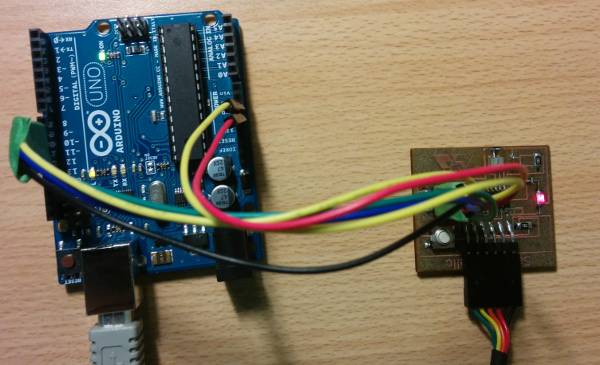
This is when SDA (serial data) is pulled low while SCL (serial clock) stays high.
#Wire.h library arduino download serial#
In other words, you don't swap pins (like you do with serial communications, where you connect Tx to Rx and vice-versa).

This is because the pull-up resistors keep the lines high until one of the devices wants to use it by pulling a line low. The pins should be connected together (that is, pin 4 to pin 4, and pin 5 to pin 5, if you are connecting Arduino Unos together). Of course, you also need to connect the GND (ground) pins to complete the circuit. Warning: for multiple I2C devices, or longer cable runs, the 4.7K pull-up resistor (for each line) is recommended.Īlso see further down in this thread for some screen-shots of the effect of using different pull-up resistors. The Atmega328 is configured to use internal pull-up resistors which may be adequate for short cable runs. These pins may require pull-up resistors (that is, connect them to +5v via something like a 4.7K resistor each). They are also connected to D2 (SDA) and D3 (SCL). On the Arduino Leonardo, the SDA and SCL pins are separate pins, so marked, on the board (next to AREF). On the Arduino Mega, SDA is digital pin 20 and SCL is digital pin 21 (they are marked SDA and SCL on the board itself). Analog port 5 (A5) = SCL (serial clock).On the Arduino Uno the pins you need are: More information about the Arduino Two-Wire interface at: Address 0 is reserved as a "broadcast" address, addresses 1 to 7 are reserved for other purposes, and addresses 120 to 127 are reserved for future use.īecause of this you could have an LCD screen (say) at address 10, a keyboard at address 11, and so on. Each device needs to have a unique address in the range 8 to 119. This is because the devices are "addressable". The Two-Wire interface is extremely useful for connecting multiple devices, as they can all share the same two pins (plus a ground return). A lot of the details however will be of more general interest. This post describes how the I2C (Inter-Integrated Circuit, or "Two-Wire") interface works, with particular reference to the Arduino Uno which is based on the ATmega328P microprocessor chip.

This page can be quickly reached from the link: Wire.A summary of everything shown below is available further down this page: Wire.write(val++) // sends potentiometer value byte Wire.write(byte(0x55)) // sends instruction byte Wire.beginTransmission(44) // transmit to device #44 (0x2c) Wire.begin() // join i2c bus (address optional for master) If I reduce the transmission to just the step #2 instruction single data byte, the same result is shown. The 2 data bytes are not being transmitted. The only byte I can see in my oscilloscope is just the first one (please see picture below).


work fine using standard Arduino libraries, the mentioned example doesn't work for me in my working NANO board. Although several I2C devices like DS3231 RTC, etc. I am an experienced assembler and C/C++ programmer and hardware developer/designer.
#Wire.h library arduino download code#
I just copied and reduced the code below a little from the example. Written by Nicholas Zambetti and Shawn Bonkowski, demonstrates use of the Wire library. I am starting to study the Wire library (no previous Arduino Wire library experience), I read some info taken from here.Īs you all know, this really simple example changes the value of a AD5171 digital potentiometer via I2C.


 0 kommentar(er)
0 kommentar(er)
